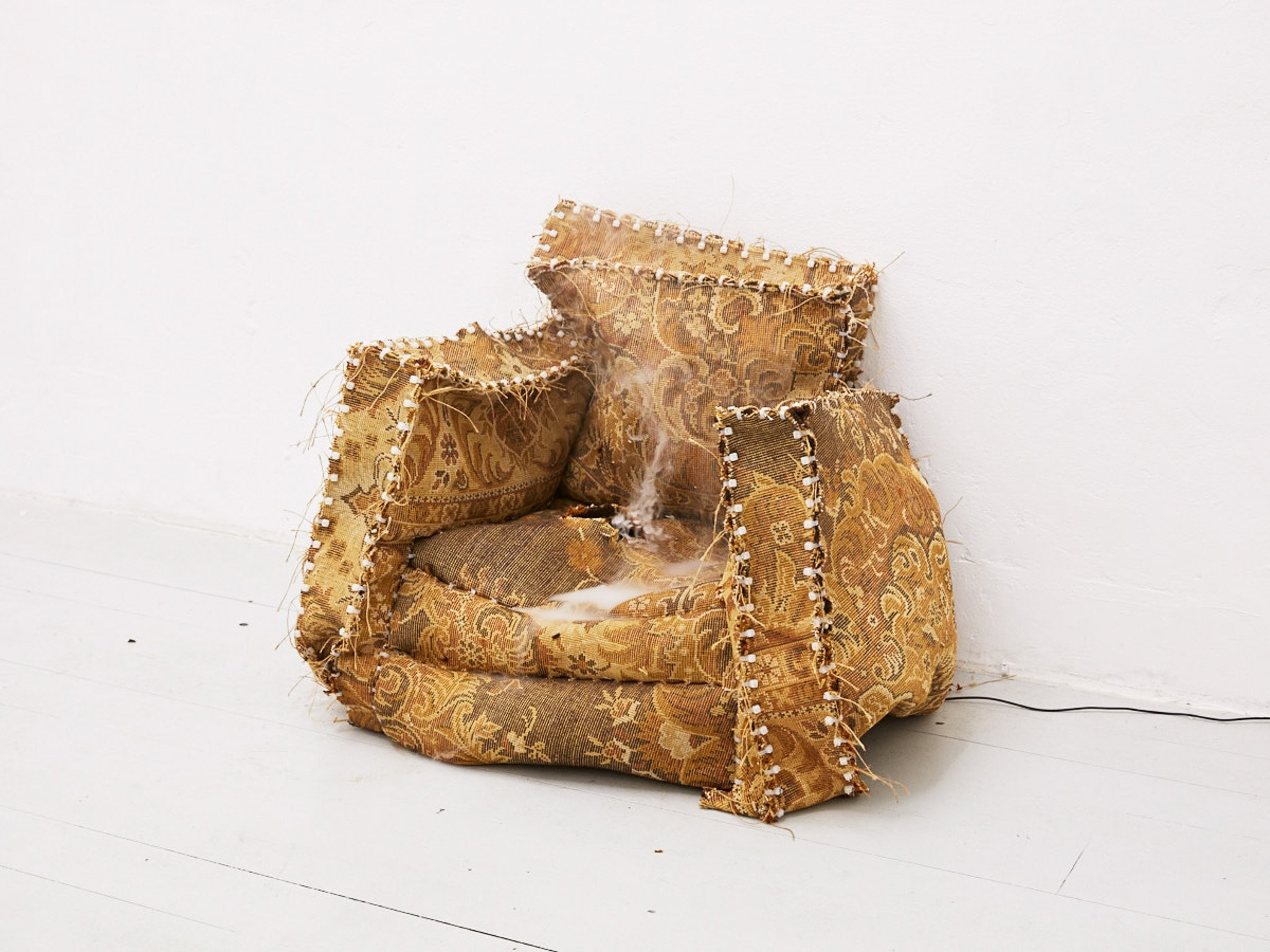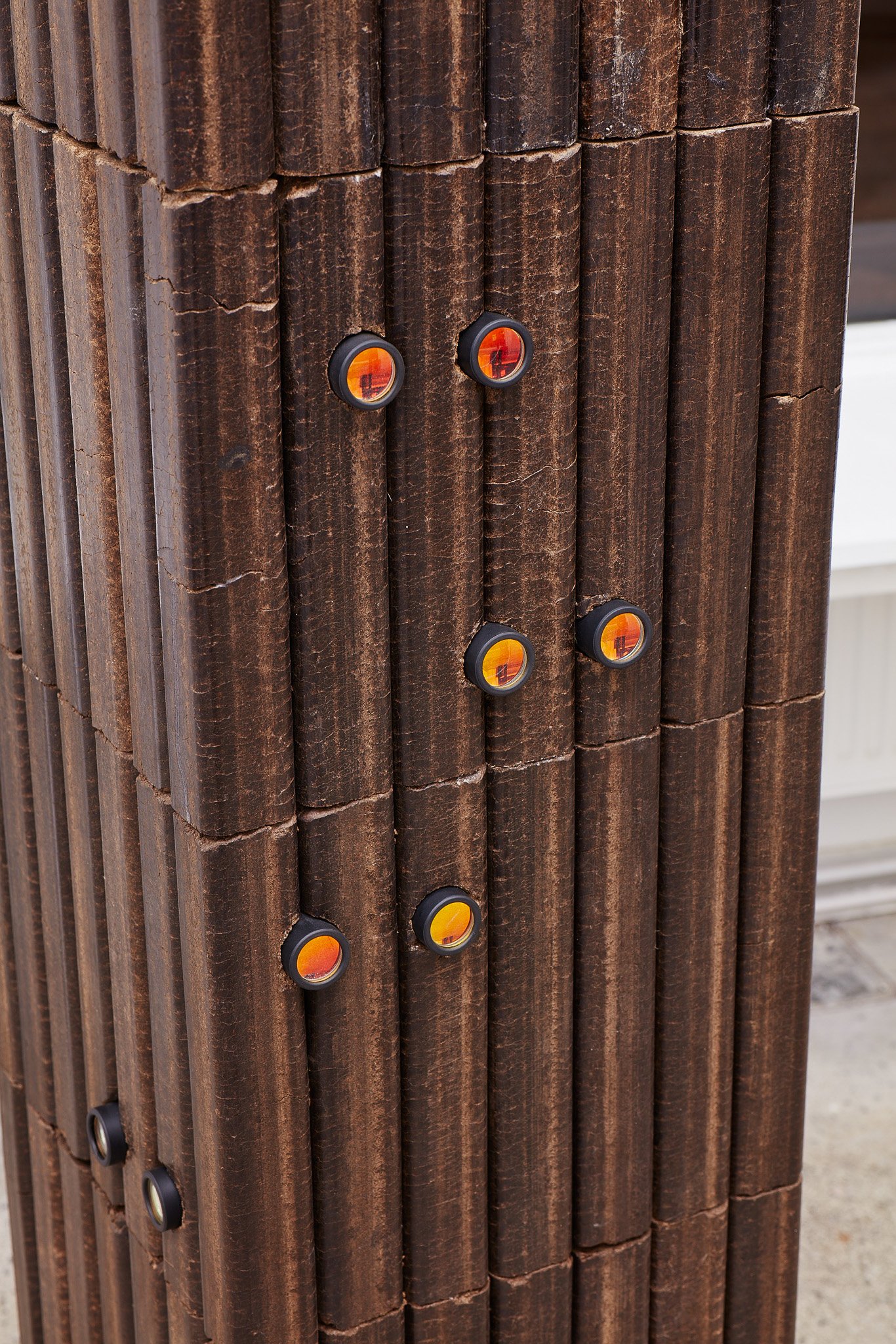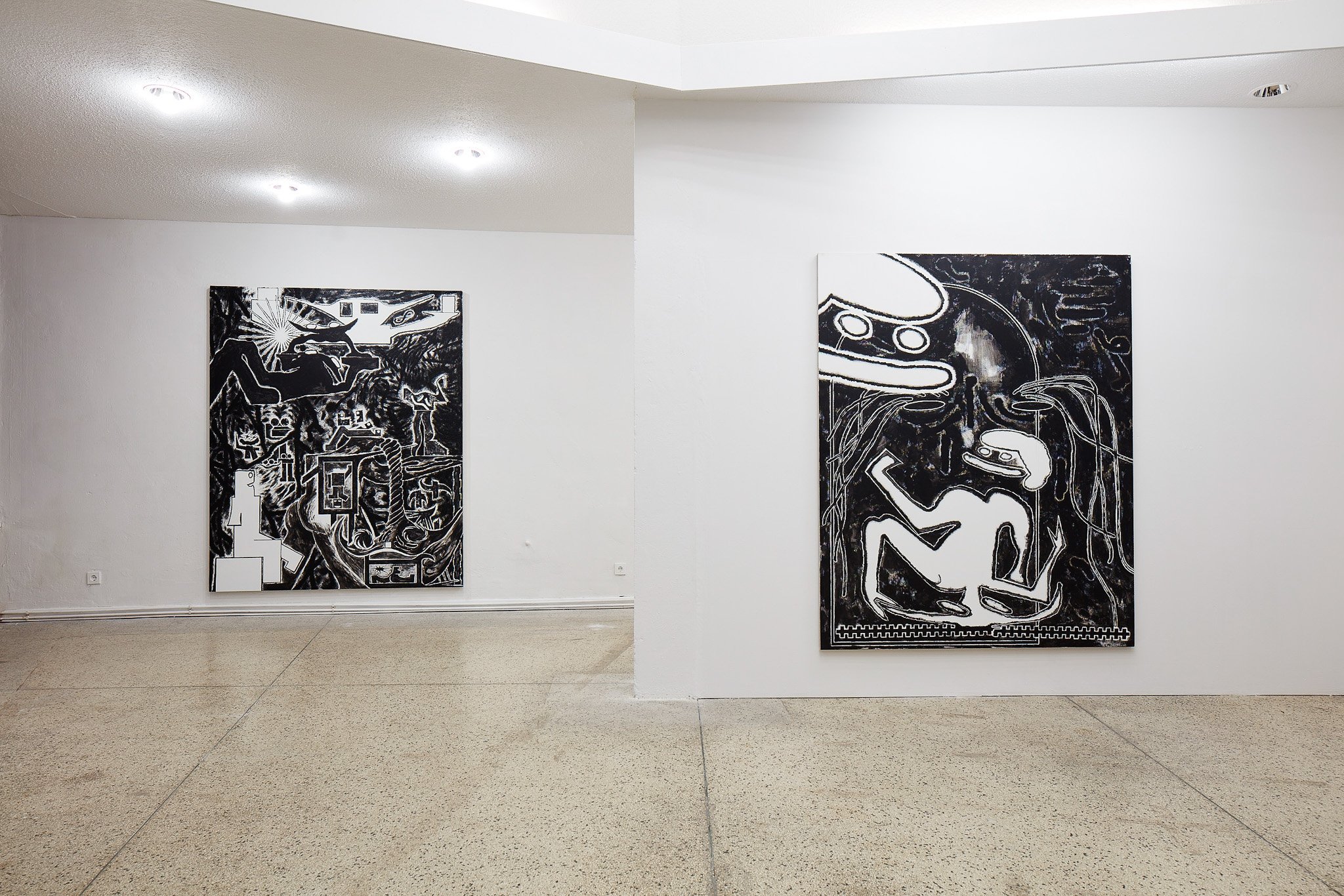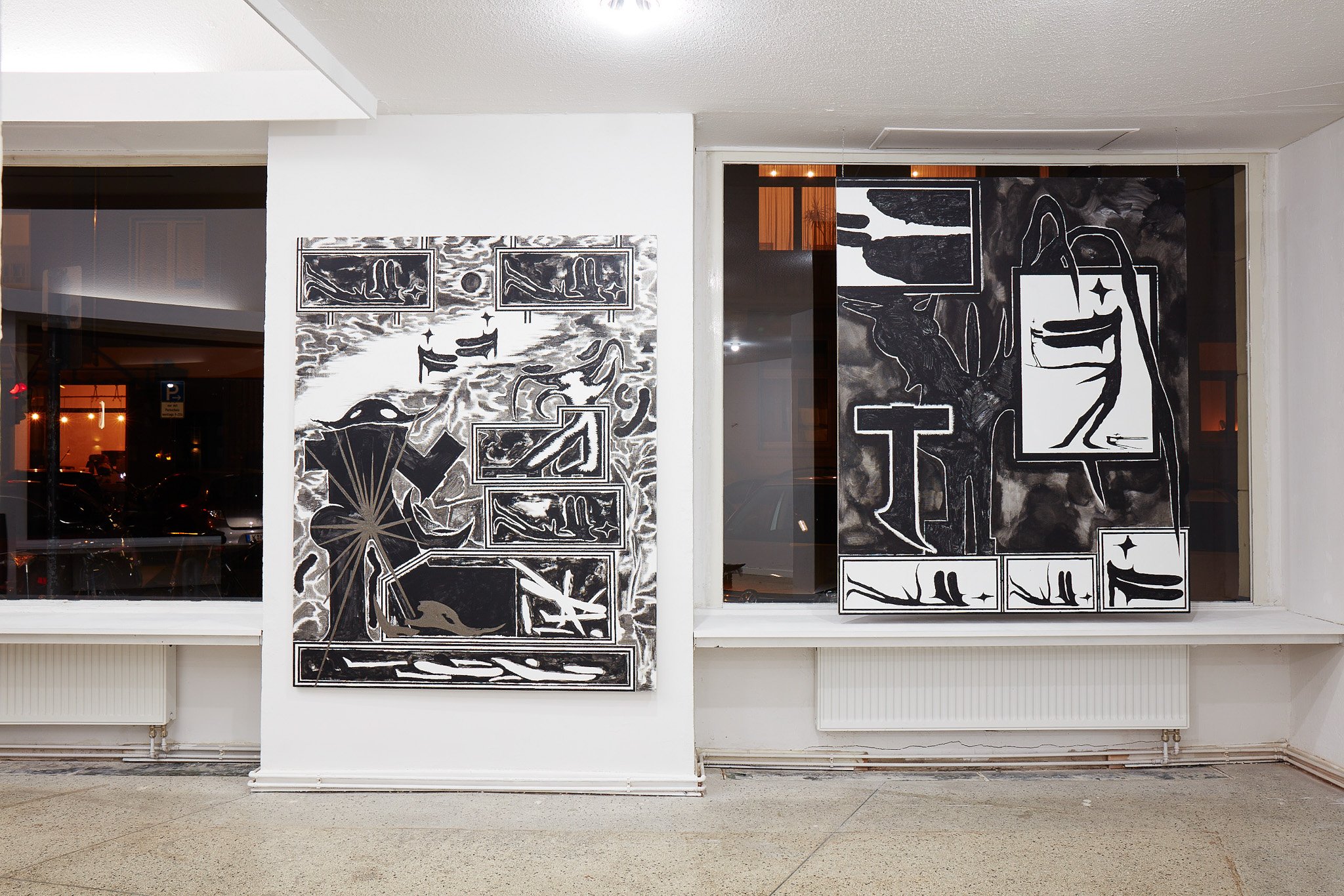Hearth, Jan Kaps,
Cologne
Hearth (solo)
Venue Jan Kaps, Cologne, Germany
Date 8 February - 16 May 2020
Photography Paul Schoepfer





























Press Release
Jan Kaps is pleased to present Hearth, an exhibition of works of the Warsaw-based artist Cezary Poniatowski.
In his exhibition, which extends through both gallery locations, he primarily shows new works and combines various groups of works for the first time. Paintings, relief wall objects, and free-standing sculptures are all presented in a deep shade of black. Here and there, natural materials flash to the fore.
In the space on Jülicher Strasse, an object and reliefs are on display. Except for a large-scale relief in the middle of the room, Watch (2020), the reliefs are hung on the gallery walls. On partially painted wooden boards the artist has created free-form arrangements with upholstery foam, over which he stretched and stapled synthetic leather. Non-committal sketches preceded the works, only details of which are subsequently discernible. Poniatowski constructs the pictorial ground in a painterly manner. Fore- and background become one. The figure-ground relationship, that is, the object’s contrast with the background, is eliminated. The free-standing relief is captivating in its size and physicality. While all the reliefs suggest there is something underneath the leather, here the backside is literally exposed. The holes and opening in the work could be there for ventilation. The individual branches seem foreign, too natural; they refer to the exhibition’s title, Hearth.
The adjoining room shows an unusual, fragile chair object made of carpet entitled Anger (2020). Here Poniatowski used a scaffold in order to stretch the carpet upside down over it. He then removed the “skeleton.” The object is slumping and seems exhausted. Smoke rises thinly from it.
In the gallery’s Vosberg Room, on the other side of the street, Poniatowski has arranged paintings and a group of sculptures. The artist’s background as a printmaker manifests in the painterly works. He holds a degree in printmaking from the Warsaw Academy of Fine Arts. Similar to the woodcuts, sharp lines are visible. The texture of the wooden boards and the light inking in places evoke the aesthetic features of classical relief printing. Similar to the reliefs, the paintings are primarily abstract, allowing only partially for the recognition of shapes, sometimes figures. The figures are accessories. They become a secondary embellishment borne of the image.
The sculptures in the space were all produced for the exhibition. They imagine a landscape themselves, just as the landscapes and worlds represented in them. The chirping of crickets emanates from the work Motherland (2020). The sardonic laugher literally extending above the work could also be an insect. High-rise (2020) is a tower made of massive compressed sawdust briquettes. Unusual eyeglasses with orange lenses are attached to the tower as if looking out from it. Sound and Vision (2020) consists of two hollowed-out speaker towers. They, too, bring to mind high-rises. In one of them, hearing protectors are tightly packed together. As “residents” of the tower, they live in claustrophobic conditions and have no connection anymore to the outside world. Their withdrawal and the time related to it give them the gift of close observation, to see more than others. Perhaps even more than reality. “Derealization” is when a person perceives shape, size, and color differently, which in turn leads to the outside world appearing strange or unreal. Suddenly objects, other people even, seem unreal, dreamlike, or foggy. This can go so far that you lose connection to yourself. This kind of “other” perception interests Cezary Poniatowski. His works emerge in tedious, conflicted processes. The “key work” does not exist.
Poniatowski’s works in the exhibition Hearth at Jan Kaps are uncanny, and simultaneously they convey a feeling of intimacy. Inky coldness meets soft padding. Shapes with sharp edges become figures in a landscape. The works attract the viewer’s gaze. Similar to the depth and blackness of Auguste Rodin’s The Gates of Hell, they devour the viewer’s gaze. Yet still the works remain in the present and do not cite 19th-century sculptors. They are here, now. Cheap upholstery from social housing meets wicked bondage aesthetic. Concrete scenes and fictive realities become an unsettling landscape. You wish to see, feel, and understand. And maybe you just have to admit that you can’t.
See on Jan Kaps’ website